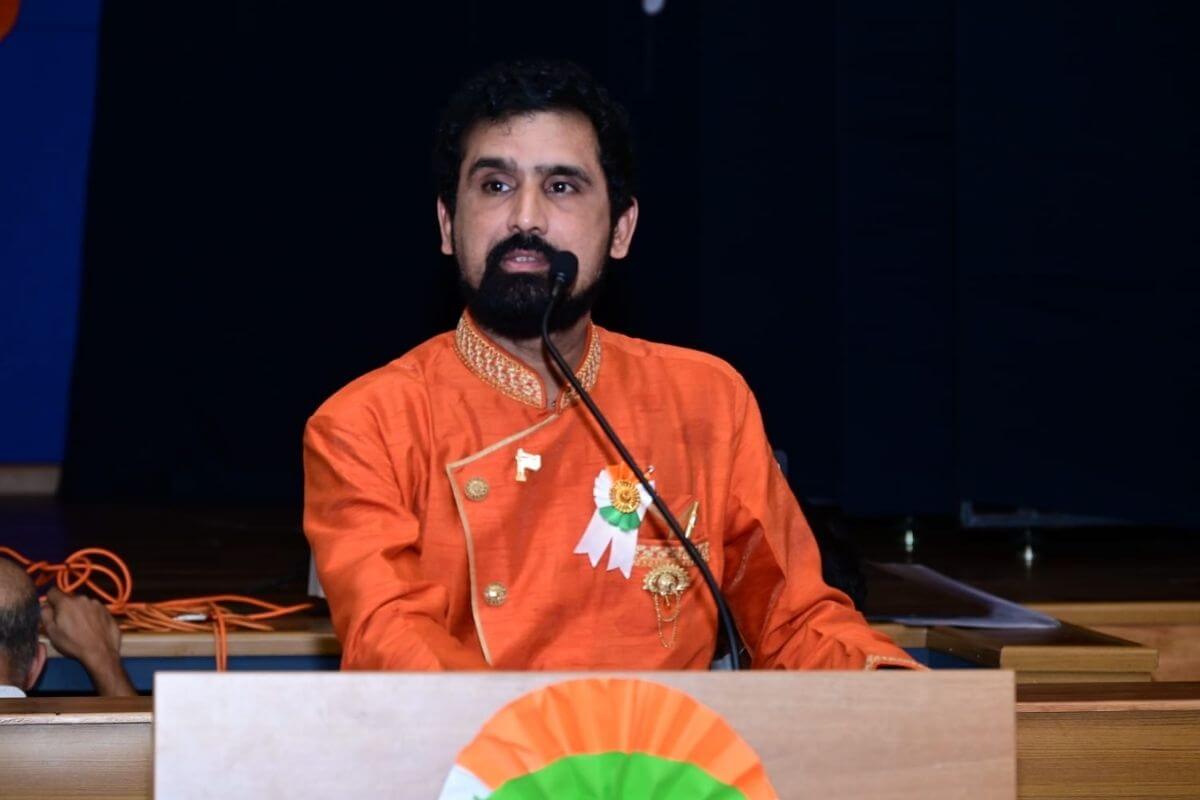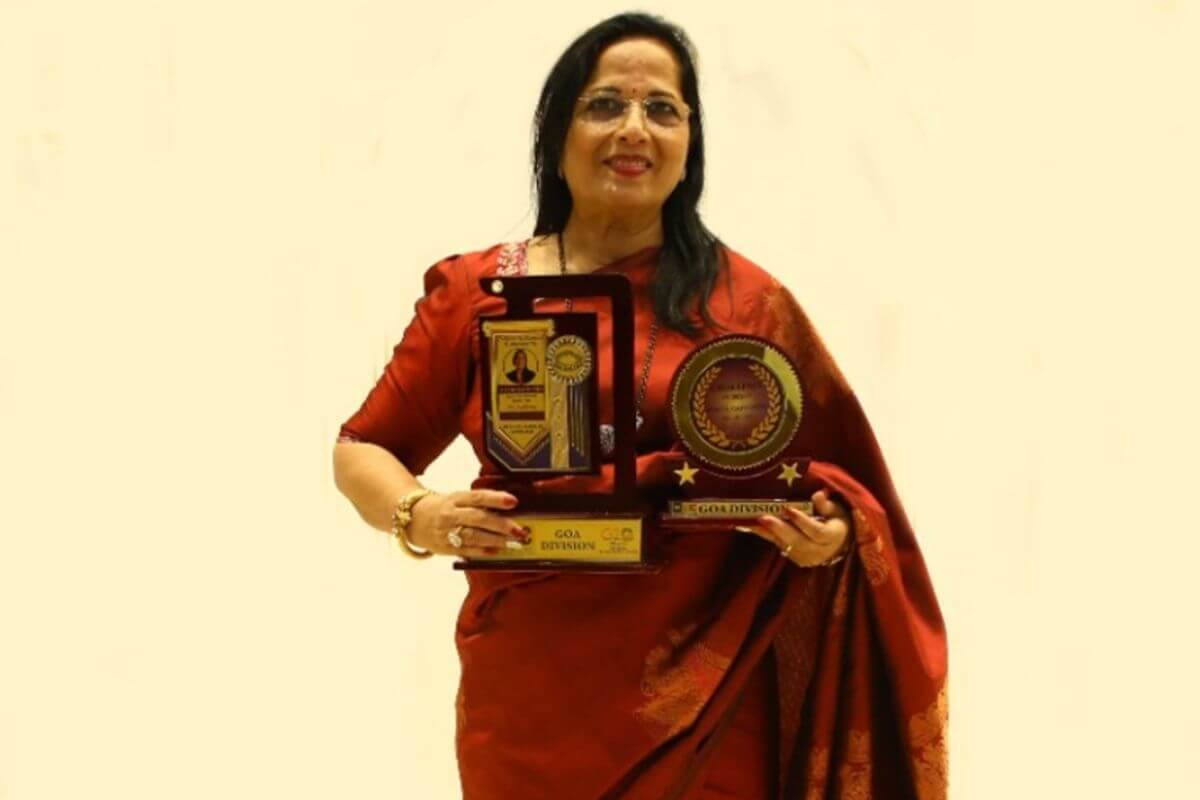Goa, a coastal state in India, is famous for its stunning beaches, vibrant culture, and unique blend of Indian and Portuguese influences. Despite its small size, there are many interesting and lesser-known facts about Goa that make it a fascinating destination for travellers and a point of pride for its residents. In this article, we will explore 10 facts about Goa that many people may not know, from its historic landmarks to its rich tradition of folk art, from its high literacy rate to its role as home to the Indian Navy’s Western Naval Command. Whether you are planning a visit to Goa or simply interested in learning more about this beautiful state, read on to discover some surprising and intriguing facts about Goa.
1. Goa was a Portuguese colony for over 450 years before it was annexed by India in 1961
As a result, the state has a unique blend of Indian and Portuguese cultures. Goa was a Portuguese colony for over 450 years, from the early 16th century until it was annexed by India in 1961. During this period, Goa was a major trading hub for the Portuguese, who brought with them their language, religion, and culture. The Portuguese influence on Goa can be seen in its unique architecture, with the state having several Baroque-style churches and colourful houses with wrought iron balconies. The Portuguese also introduced their cuisine to Goa, with dishes like vindaloo, sorpotel, and bebinca becoming popular in the state.
The Portuguese also introduced Christianity to Goa, and as a result, the state has a significant Christian population, with several churches and cathedrals dotting the state. The Portuguese also left their mark on the state’s language, with Konkani, the state language, containing several Portuguese loanwords.
At the same time, Goa has also retained its Indian identity, with Hinduism being the dominant religion in the state. The state also has a rich history of traditional medicine and handicrafts, which have been passed down from generation to generation.
Today, Goa’s unique blend of Indian and Portuguese cultures can be seen in its festivals, such as the Carnival and the Feast of St. Francis Xavier, which combine Indian and Portuguese traditions. This unique mix of cultures has made Goa a popular destination for tourists from around the world who come to experience its rich history, culture, and cuisine.
2. The state is home to several famous churches and temples, including the Basilica of Bom Jesus, which is a UNESCO World Heritage site.
Goa is home to several famous churches and temples, including the Basilica of Bom Jesus, which is a UNESCO World Heritage site.
The Basilica of Bom Jesus, located in Old Goa, is one of the most famous churches in India and is dedicated to the infant Jesus. It is basically famous for housing the remains of St. Francis Xavier, a Spanish missionary who played a major role in spreading Christianity in Asia. The church was built in the Baroque style and was completed in the late 16th century.
In addition to the Basilica of Bom Jesus, there are several other famous churches in Goa, including the Se Cathedral, the Church of St. Francis of Assisi, and the Church of Our Lady of the Immaculate Conception. These churches are known for their unique architecture, which blends Indian and Portuguese styles.
Goa is also home to several famous temples, including the Shri Manguesh Temple, which is dedicated to Lord Shiva, and the Shanta Durga Temple, which is dedicated to the goddess Durga. These temples are known for their intricate carvings and beautiful architecture.
Overall, the churches and temples of Goa are not only important religious sites but also popular tourist attractions, attracting visitors from around the world who come to experience the state’s rich history and culture.
3. The Dudhsagar Falls, located in the Bhagwan Mahaveer Sanctuary, are one of the tallest waterfalls in India and a popular tourist attraction in Goa
The Dudhsagar Falls are located in the Bhagwan Mahaveer Sanctuary in Goa and are one of the tallest waterfalls in India. The falls are a popular tourist attraction, drawing visitors from all over the world.
The Dudhsagar Falls are located on the Mandovi River and are surrounded by lush green forests, creating a picturesque landscape. The falls get their name from the white foam created by the water as it cascades down the rocks, resembling milk, which is what “Dudhsagar” means in the local language.
The falls are about 310 meters tall and are divided into four tiers, with water gushing down from each tier with great force. Visitors can view the falls from a distance, or they can take a trek to the base of the falls and enjoy a refreshing swim in the cool water.
The Bhagwan Mahaveer Sanctuary, where the falls are located, is also home to several species of flora and fauna, including tigers, leopards, and deer. Visitors can take a safari through the sanctuary to explore its natural beauty.
Overall, the Dudhsagar Falls is a must-visit attraction in Goa, offering visitors a chance to witness the natural beauty of the state and experience the power of one of India’s tallest waterfalls.
4. Goa is home to the Indian Navy’s Western Naval Command, which is responsible for maritime operations along India’s western coast
The Western Naval Command was established in 1968 and is headquartered in Mumbai. However, it has a significant presence in Goa, with several naval bases and facilities located in the state, including INS Hansa, INS Gomantak, and INS Mandovi.
The naval bases in Goa are strategically located, allowing the Indian Navy to monitor and secure India’s western coast, which is a critical maritime route for trade and commerce. The naval bases also serve as a training center for naval personnel, with several specialized schools located in Goa, including the Naval Aviation School and the Naval Institute of Aeronautical Technology.
In addition to its strategic importance, the Indian Navy’s presence in Goa has also contributed to the state’s economy, with several businesses and industries supported by the naval base. The naval personnel stationed in Goa also contribute to the local economy, patronizing local businesses and generating employment opportunities.
Overall, the Indian Navy’s Western Naval Command in Goa plays a vital role in securing India’s western coast and safeguarding the country’s maritime interests.
5. The coconut tree is the state tree of Goa, and the coconut is an important ingredient in Goan cuisine
The coconut tree, known as the “Kalpvriksha” or “tree of life,” is found in abundance in Goa and is an essential part of the state’s culture and cuisine. The tree is valued for its fruit, which is used in a variety of dishes, including curries, stews, and desserts.
Coconut milk is a popular ingredient in Goan cuisine, used to add a rich and creamy texture to curries and stews. Coconut oil is also widely used in cooking, providing a distinct flavour and aroma to dishes.
In addition to its culinary uses, the coconut tree is also an important source of raw material for various industries. The tree’s leaves are used for thatching roofs and making baskets, while its trunk is used for construction and making furniture.
Overall, the coconut tree is an essential part of Goan culture and cuisine, contributing to the state’s economy and livelihoods. Its abundance in the state has also earned Goa the nickname “Coconut Paradise.”
6. The Mahalaxmi Temple in Goa is one of the few temples in India where the goddess is depicted wearing Western-style clothing
The Mahalaxmi Temple in Goa is a unique temple that stands out for its depiction of the goddess wearing Western-style clothing. Mahalaxmi is the Hindu goddess of wealth, prosperity, and abundance, and the temple dedicated to her is located in the town of Bandora, in the Ponda district of Goa.
The temple’s unique feature is that the idol of the goddess is dressed in a gown and jacket, which is a departure from the traditional saree or other traditional attire worn by goddesses in most Hindu temples. This attire is believed to have been influenced by the Portuguese who ruled Goa for over four centuries, during which time many Goans converted to Christianity and adopted Western dress.
According to legend, the temple was built in the 16th century by a wealthy Portuguese merchant named Vithal Kamat, who was a devotee of the goddess Mahalaxmi. He had a vision of the goddess in Western clothing and commissioned the temple to be built in her honour, with an idol that reflected his vision.
Over time, the temple has become a symbol of the unique blend of Indian and Portuguese cultures in Goa, and it is visited by both Hindu and Christian devotees. The temple’s architecture is a fusion of Hindu and Portuguese styles, with a gabled roof and intricate carvings on the walls.
Overall, the Mahalaxmi Temple in Goa is a testament to the state’s rich cultural heritage and its unique blend of Indian and Western influences.
7. Goa was once known as the “Rome of the East” due to the influence of the Portuguese on the state’s architecture and culture
Goa was once known as the “Rome of the East” because of the strong influence of Portuguese culture and architecture in the state. The Portuguese arrived in Goa in the early 16th century and ruled the state for over 450 years until India’s independence in 1947. During this period, the Portuguese left a lasting impact on the state’s culture, religion, architecture, and cuisine.
The Portuguese introduced Christianity to Goa and built several churches and cathedrals in the state. The most famous of these is the Basilica of Bom Jesus, which is a UNESCO World Heritage site and contains the mortal remains of St. Francis Xavier, a patron saint of Goa.
The Portuguese also introduced a unique blend of Indian and Portuguese architecture, which is reflected in the state’s numerous colonial-era buildings, including the iconic Baroque-style mansions in the Fontainhas neighbourhood of Panaji, the capital of Goa.
The Portuguese also left their mark on Goan cuisine, introducing ingredients and cooking techniques that are still used today. One of the most popular dishes in Goan cuisine is the Vindaloo, a spicy curry made with vinegar, garlic, and chillies, which has its roots in Portuguese cuisine.
Overall, the influence of the Portuguese on Goa’s architecture, culture, and cuisine has earned the state the nickname “Rome of the East.” It is a testament to the rich and diverse history of Goa, which is reflected in its unique blend of Indian and Western influences.
8. The Portuguese influence on the state can be seen in its unique architecture, including the Baroque-style churches and colourful houses with wrought iron balconies
The Portuguese influence on the state of Goa is clearly visible in its architecture, which is a blend of Indian and European styles. The Baroque-style churches and colourful houses with wrought iron balconies are some of the most distinctive examples of this architectural fusion.
The Portuguese introduced the Baroque style of architecture to Goa in the 16th century, which is characterized by ornate and intricate designs, curved lines, and dramatic use of light and shadow. This style is most prominently displayed in the state’s numerous churches and cathedrals, such as the Se Cathedral, the Church of St. Francis of Assisi, and the Church of Our Lady of the Immaculate Conception.
The colourful houses with wrought iron balconies are another example of the Portuguese influence on Goan architecture. The houses are built with laterite stone, which is a red or brown-coloured rock commonly found in the region. The balconies are adorned with intricately wrought iron grills, which add to the charm and character of the buildings. The Portuguese also introduced the concept of the “Mandovi-style” house, which is a unique blend of Indian and Portuguese architecture. These houses typically feature a central courtyard, a sloping tiled roof, and an elevated veranda or balcony. The houses are painted in bright colours and decorated with ornate carvings and paintings.
Overall, the Portuguese influence on Goan architecture is a testament to the state’s rich and diverse history, and it has helped shape the unique character of Goa’s cities and towns. The Baroque-style churches and colourful houses with wrought iron balconies are just some examples of the architectural legacy left by the Portuguese in Goa.
9. The state has a rich tradition of folk art, including the dance forms of Dekhnni, Fugdi, and Dhalo, which are performed during festivals and other celebrations

Goa has a rich tradition of folk art, music, and dance, which reflects the state’s diverse cultural heritage. The folk dances of Dekhnni, Fugdi, and Dhalo are among the most popular and widely performed in the state, and they are an integral part of the Goan culture.
Dekhnni is a graceful dance form that originated in Goa and is traditionally performed by women. It is typically performed during weddings, festivals, and other joyous occasions. The dance is characterized by slow, graceful movements, and it is accompanied by traditional music played on the violin, the mando (a type of guitar), and the ghumat (a percussion instrument).
Fugdi is another popular folk dance form in Goa, which is traditionally performed by women during the Ganesh Chaturthi festival. It is a high-energy dance that is performed to the beat of drums and cymbals. The dance involves intricate footwork and hand movements, and the dancers wear colorful sarees and jewelry.
Dhalo is a group dance form that is typically performed by men during the monsoon season. It is a form of ritualistic worship, where the dancers wear traditional attire and perform rhythmic steps while singing devotional songs.
Apart from these dance forms, Goa also has a rich tradition of music and theater, including the Kunbi dance-drama, the Zagor folk theater, and the Manddo, a form of folk music that combines Indian and Western music styles.
Overall, the folk dances of Dekhnni, Fugdi, and Dhalo are just some examples of the rich and diverse cultural heritage of Goa, which has been shaped by its history and the influence of various cultures over the centuries.
10. The state has a high literacy rate of over 87%, which is one of the highest in the country
Goa has one of the highest literacy rates in India, with a literacy rate of over 87%. This can be attributed to several factors.
Firstly, Goa has a long history of education, with the first school being established by the Portuguese in the early 16th century. Over the years, the state has continued to prioritize education, with a strong emphasis on primary education and literacy programs.
Secondly, Goa has a relatively high standard of living compared to other states in India, which has allowed for better access to education and resources. The state has a well-developed infrastructure, including a network of schools and colleges, libraries, and other educational institutions.
Thirdly, the state has a diverse population that is open to new ideas and cultures. This has created a conducive environment for learning and education, as people are more receptive to new ideas and experiences.
Lastly, the state government has implemented several policies and programs aimed at promoting education and literacy. For example, the state has implemented the Sarva Shiksha Abhiyan (SSA) program, which aims to provide universal access to education for all children between the ages of 6 and 14.
Overall, the high literacy rate in Goa is a result of a combination of factors, including a strong history of education, a relatively high standard of living, a diverse and open population, and proactive government policies and programs.
In conclusion, Goa is a state in India that is well-known for its beautiful beaches, unique culture, and rich history. As we have seen in this article, there are many interesting and surprising facts about Goa that many people may not know. From its Portuguese influence to its high literacy rate, and from its delicious cuisine to its famous landmarks like the Basilica of Bom Jesus and the Dudhsagar Falls, Goa has a lot to offer visitors and residents alike. Whether you are planning a trip to Goa or simply want to expand your knowledge of this fascinating state, we hope that these 10 facts about Goa have been informative and interesting.
Discover more from Incredible Goa
Subscribe to get the latest posts sent to your email.




































